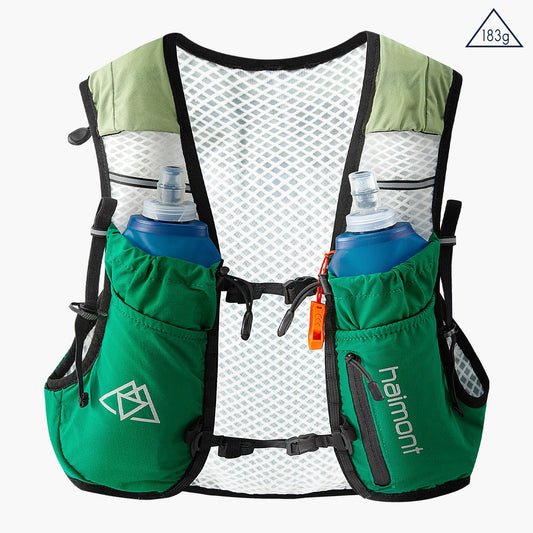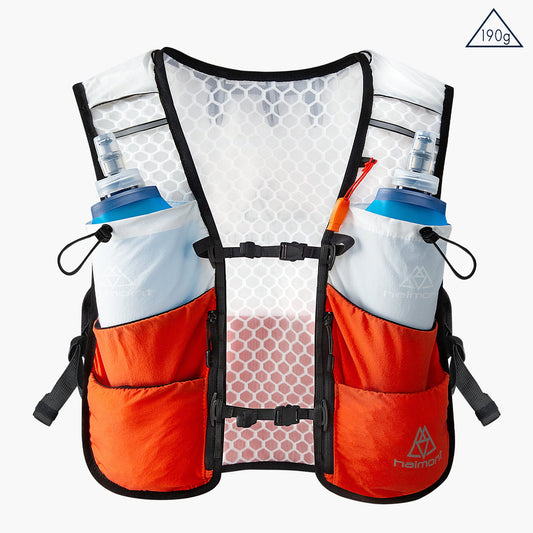Running In The Mountains With Kids: Trail Running Training and Safety Guidelines for Kids
Taking your children to participate in trail running can help enhance their cardiopulmonary endurance, muscle strength and balance and coordination, while improving immunity and physical adaptability. Psychologically, trail running can help children develop persistence and endurance, enhance self-confidence, and relieve stress and anxiety. Through exploration and challenges in nature, children can learn to set goals and solve problems, enhance adaptability and safety awareness. In addition, trail running is a good opportunity to enhance parent-child relationships. Parents and children build deeper trust and tacit understanding in the process of overcoming difficulties and exploring nature together, while allowing children to learn teamwork and environmental awareness. This is not only an exercise, but also a journey of physical and spiritual growth. Some detailed suggestions to help you prepare your child:
1. Training plan
● Step by step:
○ Beginners:
Start with a 1-2 km flat route and train 2-3 times a week.
Each training time is controlled to 20-30 minutes, mainly easy running, so that children can gradually adapt to the rhythm of running.
You can try to train in a safe environment such as parks and playgrounds.
○ Intermediate:
You can try a 3-5 km route, add some gentle slopes and simple terrain changes, and train 3-4 times a week.
Each training time is controlled to 30-45 minutes, and some interval running can be added, such as running for 1 minute and walking for 1 minute, and gradually increase the running time.
You can try to train in environments such as country parks and mountain trails.
○ Advanced:
You can challenge routes of more than 5 kilometers, add more climbing and technical terrain, and train 4-5 times a week.
Each training time is controlled to 45-60 minutes, and some long-distance endurance running can be carried out, as well as special training for climbing and technical terrain.
You can try training in more challenging environments such as mountains and canyons.

●Fun:
○ Treasure Hunt:
Set up some "treasures" in the route, such as small toys, stickers, etc., and let the children find them while running.
You can set some simple clues to increase the fun and challenge of the game.
○ Chasing Game:
Run with your children and chase each other to increase the fun.
You can set some simple rules, such as whoever runs to a certain place first wins.
○Nature Observation:
Encourage children to observe the surrounding animals and plants, such as trees, flowers, insects, etc.
You can prepare a nature observation manual to help children identify different species.
You can discuss the observed natural phenomena with your children to increase their interest in nature.
●Diversification:
○Running:
This is the basic training for trail running, which can improve children's endurance and speed.
You can conduct running training of different distances and intensities, such as easy running, interval running, long-distance running, etc.
○Hiking:
You can exercise children's leg strength and balance ability.
■You can choose some scenic hiking routes to let children enjoy the natural scenery during hiking.
○ Hill climbing:
It can enhance the child's leg strength and cardiopulmonary function.
You can choose some hills with moderate slopes for training, and gradually increase the height and difficulty of climbing.
○ Strength training:
You can add some simple strength exercises, such as squats, lunges, plank support, etc., to enhance the child's core strength and stability.
You can do strength training at home or in the gym, 2-3 times a week.
●Rest and recovery:
○ Make sure your child has enough rest time to avoid overtraining.
○ Arrange at least 1-2 rest days a week to allow your child to fully recover.
○ Do some stretching and relaxation after training to help your child relieve muscle fatigue.
 2. Equipment selection
2. Equipment selection● Running shoes:
○ Choose non-slip and supportive trail running shoes to ensure comfort and safety.
○ The soles should have deeper patterns to provide better grip.
○ The toes should be protected to prevent obstacles such as stones from being kicked.
○ It is recommended to try them on at a professional sports goods store and choose running shoes that fit your child's foot shape.
● Clothing:
○ Wear breathable and quick-drying sportswear, and avoid cotton clothes, because cotton clothes are not easy to dry after absorbing sweat, which can easily cause children to catch cold.
○ Add or remove clothes according to weather conditions, such as a light windproof jacket in cold weather.
○ Choose brightly colored clothing to increase visibility and ensure safety.
○ It is recommended to choose professional sports brands to ensure the comfort and functionality of clothing.
●Backpack:
○Choose a lightweight trail running backpack, and choose the capacity according to the length of the route and personal needs.
○The backpack should have a good carrying system to reduce shoulder pressure.
○Water bags, snacks, first aid kits, mobile phones, maps and other necessities can be placed in the backpack.
○It is recommended to choose a backpack with a chest strap and a waist belt to increase stability.
●Other equipment:
○Hat: It can block the sun and prevent sunburn. Choose a hat with good breathability.
○Sunglasses: It can protect your eyes from sun damage. Choose sunglasses with UV protection.
○Sunscreen: It can prevent skin sunburn. Choose sunscreen with SPF30 or above.
○Headlamp: If you plan to run in the evening or at night, a headlamp is essential. Choose a headlamp with high brightness and long battery life.
○Trekking poles: For longer distances or more difficult routes, trekking poles can provide additional support and stability. Choose lightweight and adjustable trekking poles.
○GPS watch: can record running route, distance, speed and other data to help children understand their training status.

3. Safety Guidelines
● Choose a suitable route:
○ Choose a route with moderate difficulty according to the child's age, physical strength and experience.
○ Understand the route conditions in advance, including distance, climbing height, terrain, etc.
○ Avoid choosing routes that are too dangerous or remote.
○ You can refer to some trail running websites or apps to find routes suitable for children.
● Go with a companion:
○ Do not let your child go alone, make sure they are accompanied by an adult.
○ If possible, you can join a team with other families.
○ You can join some trail running clubs or communities to meet more like-minded friends.
● Inform your itinerary:
○ Inform your family or friends of the itinerary and expected return time before departure.
○ If the route is long or difficult, you can consider using a GPS tracking device.
○ You can download some outdoor safety apps to record your itinerary and share it with family and friends.
● Pay attention to the weather:
○ Check the weather forecast before departure to avoid running in bad weather, such as thunderstorms, high temperatures, severe cold, etc.
○ If the weather changes suddenly, adjust the route or return in time.
○ You can follow some weather forecast websites or apps, such as "China Weather Network" and "Windy", to get more accurate weather information.
● Replenish water and energy:
○ Replenish water regularly, especially in hot weather.
○ Carry some high-energy snacks, such as energy bars, nuts, chocolate, etc., to replenish physical strength.
○ You can prepare a water bag or kettle to replenish water at any time.
● Pay attention to physical condition:
○ Pay attention to the physical condition of the child. If the child feels fatigue, dizziness, nausea and other discomfort symptoms, stop the activity immediately and seek help.
○ If the child is injured, treat it in time and seek medical assistance if necessary.
○ You can learn some basic first aid knowledge, such as how to deal with sprains, abrasions, etc.
● Environmental awareness:
○ Educate children to protect the environment, not litter, and not destroy nature.
○ Take away the garbage and keep the route clean.
○ You can participate in some environmental protection activities, such as cleaning up mountain garbage, etc., to enhance children's environmental awareness.
IV. Other suggestions
● Set an example: Parents should set an example and actively participate in trail running to stimulate their children's interest.
● Encouragement and support: Encourage children more to help them build confidence and overcome difficulties.
● Enjoy the process: trail running is not only a physical exercise, but also an opportunity to spend quality time with children, enjoying the beauty of nature and the fun of sports.











